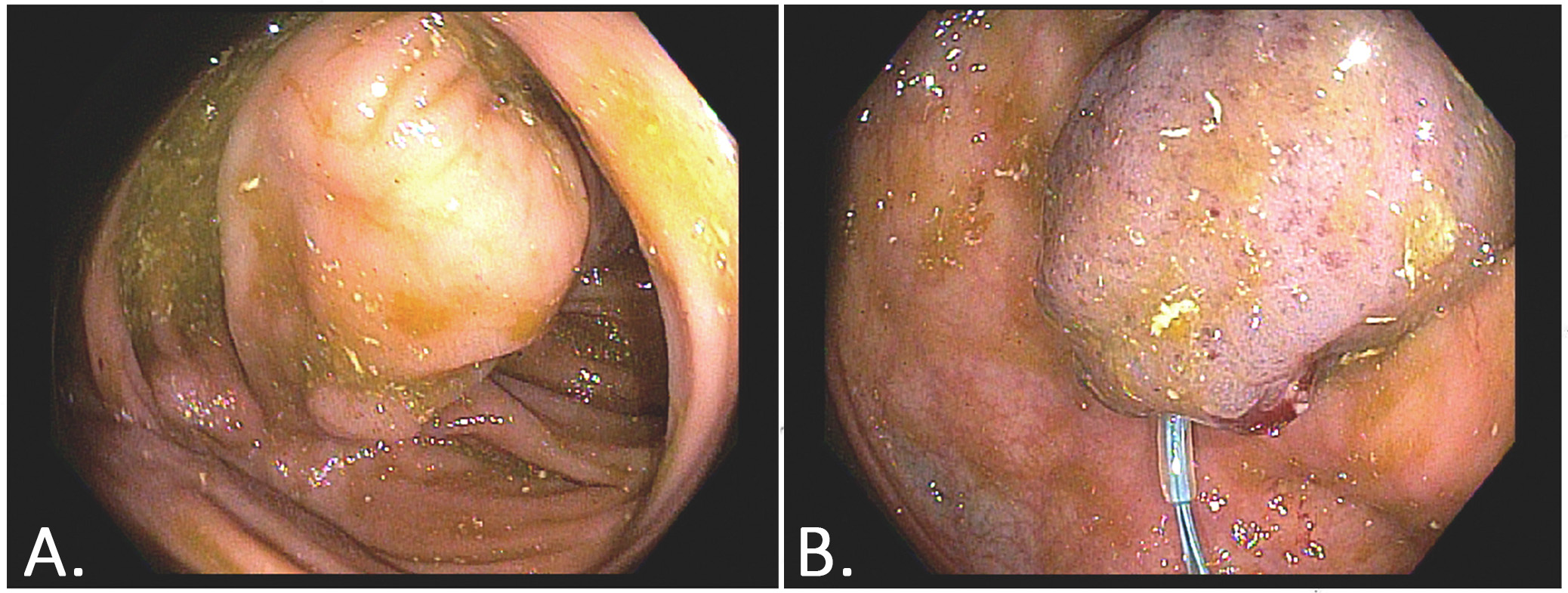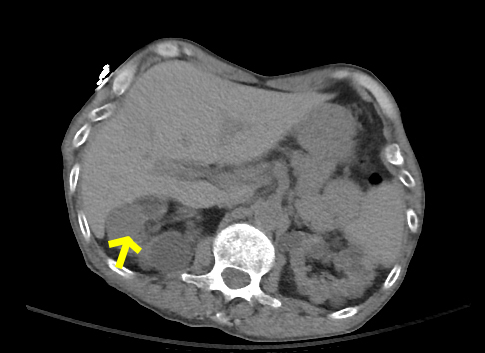Tuesday Poster Session
Category: Colon
P4622 - Minimally Invasive Management of Colonic Lipoma Causing Intussusception With Endoloop

Dylan Nunn, DO
University of Louisville School of Medicine
Louisville, KY
Presenting Author(s)
1University of Louisville School of Medicine, Gallipolis, OH; 2Wright State University, Centerville, OH; 3Wright State University Boonshoft School of Medicine, Dayton, OH
Introduction:
Intussusception is a condition in which one segment of the intestine telescopes into an adjacent segment, potentially leading to obstruction. Giant colonic lipomas are rare and often asymptomatic, but when large enough, can serve as a lead point for intussusception. We present a case of adult colonic intussusception caused by a large colonic lipoma.
Case Description/
Methods:
A 62-year-old male with a history of stroke status post gastrostomy tube presented with nausea and vomiting. He denied rectal bleeding or changes in bowel habits. Initial vitals were stable except for tachycardia. On examination, his abdomen was soft and non-tender. A CT scan of the abdomen revealed intussusception of the ascending colon into the transverse colon without bowel obstruction. A lobulated fatty mass at the tip of the intussusceptum measuring 3.5 x 2.9 x 1.8 cm was identified, consistent with a previously seen lesion on prior imaging. This mass was suspected to be colonic lipoma serving as the lead point. Given his benign abdominal exam, surgery was deferred. A colonoscopy revealed a large, 5 cm pedunculated lipoma in the transverse colon near the hepatic flexure. An endoloop was applied and tightly cinched around the base of the lesion. Ischemic, purple discoloration of the lipoma was noted following placement. He was discharged in stable condition with recommendations for close GI follow-up.
Discussion:
Intussusception in adults is rare and presents with non-specific symptoms, making diagnosis a challenge. Unlike in pediatric cases, most adult intussusception is secondary to structural lesions with malignancy being the most common cause. Lipomas are benign, nonepithelial tumors composed of adipose tissue and are typically found in subcutaneous regions of trunk and neck. Intestinal lipomas are uncommon, with an estimated incidence of 0.2%. Management of adult intussusception generally involves supportive care and surgical intervention. The management of colo-colonic intussusception may range from en bloc resection to endoscopic reduction. In our case, an endoloop was successfully used to manage the colonic lipoma. This emerging technique offers a safe and minimally invasive alternative to surgery in selected patients.
Figure: Figure 1. An axial slice from a computed tomography (CT) scan of the abdomen showing the lipoma in the transverse colon.
Figure: Figure 2. Colonoscopic view revealing the 5 cm lipoma causing intussusception A. An initial image of the lipoma before Endoloop placement. B. A subsequent image showing the lipoma post Endoloop placement.
Disclosures:
Dylan Nunn indicated no relevant financial relationships.
Urmimala Chaudhuri indicated no relevant financial relationships.
Sean-Patrick Prince indicated no relevant financial relationships.
Drew Triplett indicated no relevant financial relationships.
Dylan Nunn, DO1, Urmimala Chaudhuri, DO2, Sean-Patrick Prince, MBBS3, Drew Triplett, DO3. P4622 - Minimally Invasive Management of Colonic Lipoma Causing Intussusception With Endoloop, ACG 2025 Annual Scientific Meeting Abstracts. Phoenix, AZ: American College of Gastroenterology.
